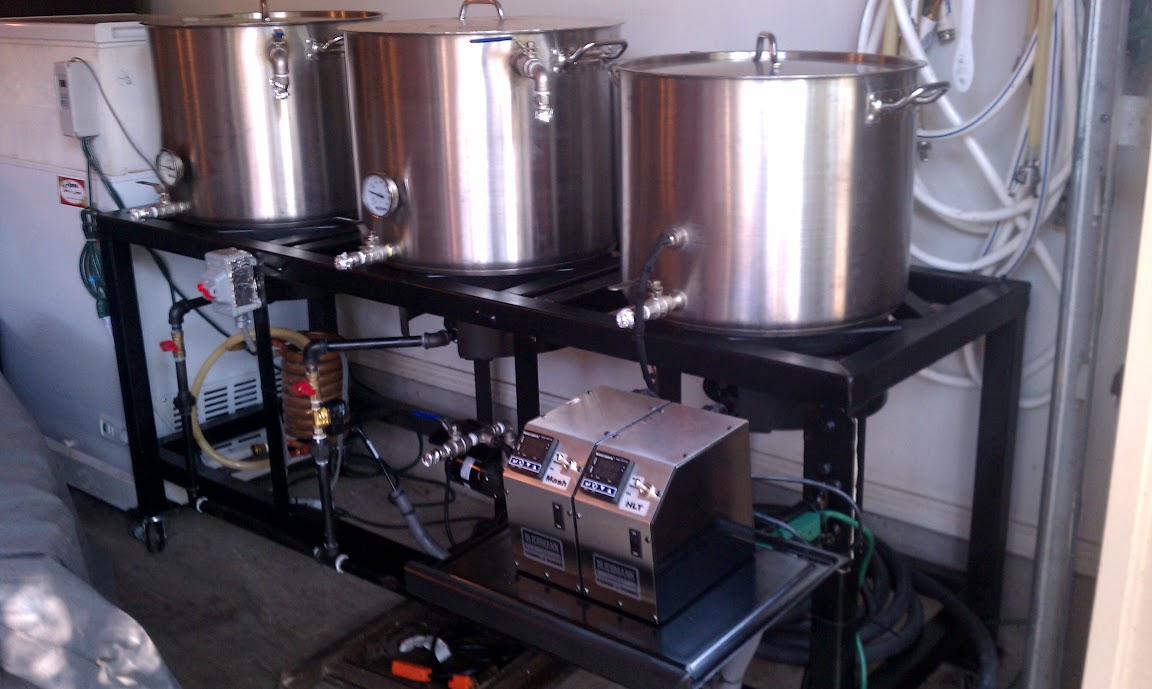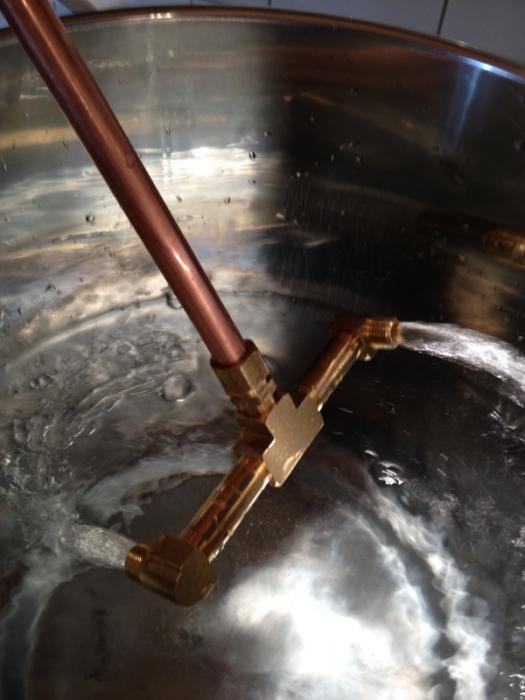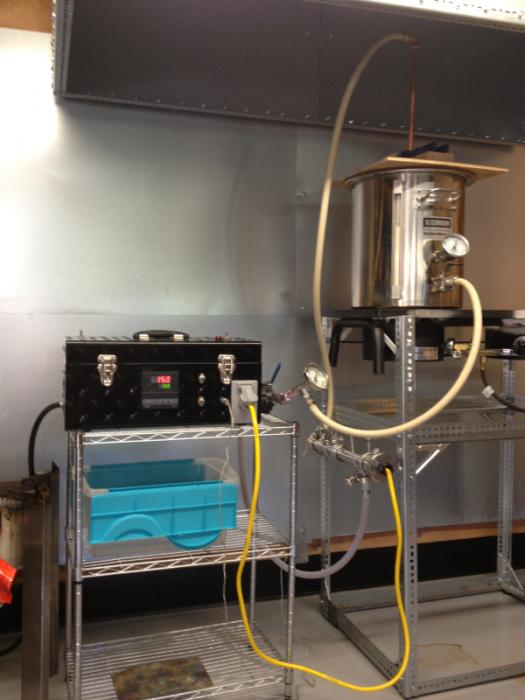NCGrayson said:
can you explain or show a little more detail about how it is adjustable? This looks like a great step for my brewery.
I heated the water to strike temp while watching both thermometers to make sure they correlate then I turn the pump off and add the grain. I stirred to mix and then let the grain settle for a few minutes. I found it best to use about 1qt (~1/2 lb) of rice hulls to keep the grain bed from getting too compacted. Once the bed settled, I took the tubing off the pump and used a pitcher to cycle through a few gallons to make sure I got all the grains out from under the false bottom. This keeps the march pump from getting clogged and prevents grains from getting burned when you heat under direct flame. I then reconnected the tubing to the pump and took the tube off the return device and drained about a qt into a pitcher to prime the pump and then closed the outflow ball valve. I reconnected the tube and then slowly open the ball valve trying to get a flow of ~ 1 to 1 1/2 gal per minute. I did some experimenting and found this to be a good flow that doesn't compact the grain bed. When I ran the pump full throttle, it was going about 6 gal/min and I had some stuck mashing. I used a timer and measuring pitcher to figure out the flow at first but now I can just look at the outflow in the tub and judge it visually. By this point, my mash has usually come down a degree or two from what it was at mash-in. Then I turn on my gas stove burner at a low setting and gradually turn it up until I can see the temp on the pump coming up. When it hits the desired temp, I leave the flame alone and watch both thermometers. Over about 5-10 minutes, I made small adjustments to the flame and once it looked like everything looked stable, I would leave it and start cleaning carboys, transferring beers, etc while taking a peek at the thermometers every 5 minutes or so to make sure the temp was stable. If you brew on a stove with imprecise flame adjustment or a turkey fryer, I don't think this system would work very well.
I was able to do step mashing pretty well with this system. To increase the mash temp, I would turn the burner all the way up (16,000 btu), while keeping the pump running and watch the outflow temp, making sure it didn't exceed the desired next mash temp. When the main mash temp reached the next step, I would repeat the process of adjusting the burner to maintain the temp again.
To collect the wort, I just disconnected the tubing from the return system and used the pump to drain the tun. I measured the gravity and volume if the first running and then batch sparged with enough water to get the boil volume I was looking for and recirculate with the pump for 10-15 minutes and then drained by gravity into another bucket. I would measure the gravity of the second running and then did some calculations to make sure I would get the right ore-boil gravity and then add the second running +/- water to get the right gravity. I rarely undershot, in which case I usually added a small amount of dry light extract.
Wow, that was wordy. Am I the only one out there who warns people "If you ask me a question about beer, make sure you have at least a half hour to kill"? Anyways, I hope that will be helpful in avoiding some of the kinks in the system I had to work out on my own. The only other important piece of advice is about the site gauge. For this system, having one was good and bad. I found that if the water level in the site gauge started going down, my mash was getting stuck. By adjusting the flow with the outflow valve on the pump, I could get the level to rise again and avoid a cluster. The bad thing about the site gauge, was if you weren't paying attention and the air fluid level reached the bottom of the site glass, in which case air would get sucked into the bottom of the mash and shut down the March pump, which then results it you scalding the mash.







